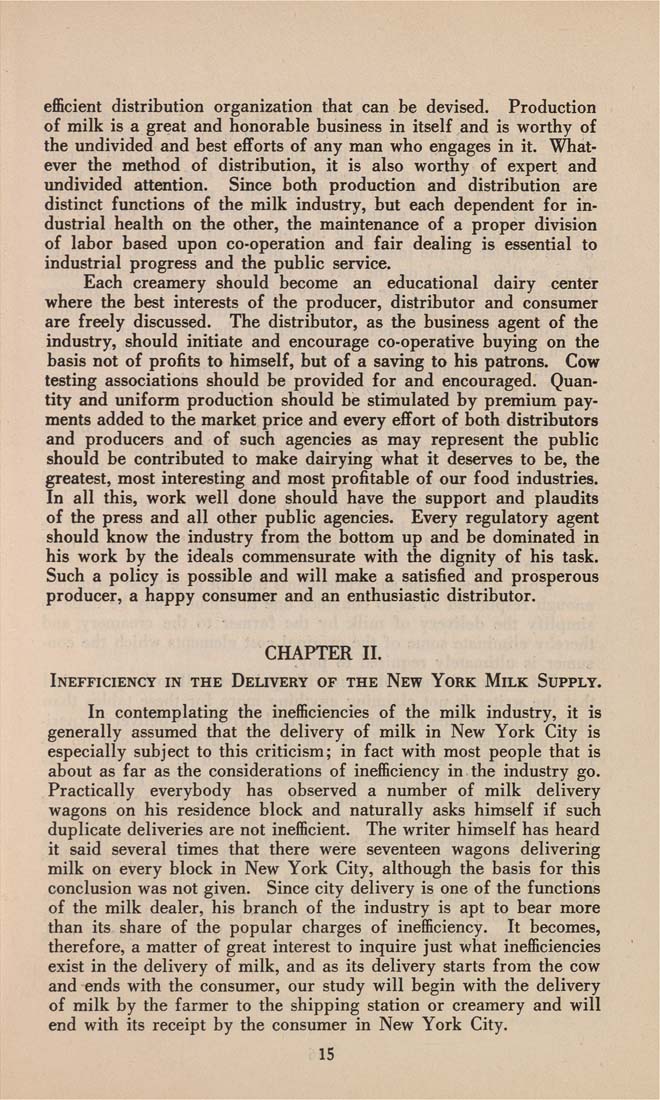efficient distribution organization that can be devised. Production
of milk is a great and honorable business in itself and is worthy of
the undivided and best efforts of any man who engages in it. What¬
ever the method of distribution, it is also worthy of expert and
undivided attention. Since both production and distribution are
distinct functions of the milk industry, but each dependent for in¬
dustrial health on the other, the maintenance of a proper division
of labor based upon co-operation and fair dealing is essential to
industrial progress and the public service.
Each creamery should become an educational dairy center
where the best interests of the producer, distributor and consumer
are freely discussed. The distributor, as the business agent of the
industry, should initiate and encourage co-operative buying on the
basis not of profits to himself, but of a saving to his patrons. Cow
testing associations should be provided for and encouraged. Quan¬
tity and uniform production should be stimulated by premium pay¬
ments added to the market price and every effort of both distributors
and producers and of such agencies as may represent the public
should be contributed to make dairying what it deserves to be, the
greatest, most interesting and most profitable of our food industries.
In all this, work well done should have the support and plaudits
of the press and all other public agencies. Every regulatory agent
should know the industry from the bottom up and be dominated in
his work by the ideals commensurate with the dignity of his task.
Such a policy is possible and will make a satisfied and prosperous
producer, a happy consumer and an enthusiastic distributor.
CHAPTER II.
Inefficiency in the Delivery of the New York Milk Supply.
In contemplating the inefficiencies of the milk industry, it is
generally assumed that the delivery of milk in New York City is
especially subject to this criticism; in fact with most people that is
about as far as the considerations of inefficiency in the industry go.
Practically everybody has observed a number of milk delivery
wagons on his residence block and naturally asks himself if such
duplicate deliveries are not inefficient. The writer himself has heard
it said several times that there were seventeen wagons delivering
milk on every block in New York City, although the basis for this
conclusion was not given. Since city delivery is one of the functions
of the milk dealer, his branch of the industry is apt to bear more
than its share of the popular charges of inefficiency. It becomes,
therefore, a matter of great interest to inquire just what inefficiencies
exist in the delivery of milk, and as its delivery starts from the cow
and ends with the consumer, our study will begin with the delivery
of milk by the farmer to the shipping station or creamery and will
end with its receipt by the consumer in New York City.
15
|








